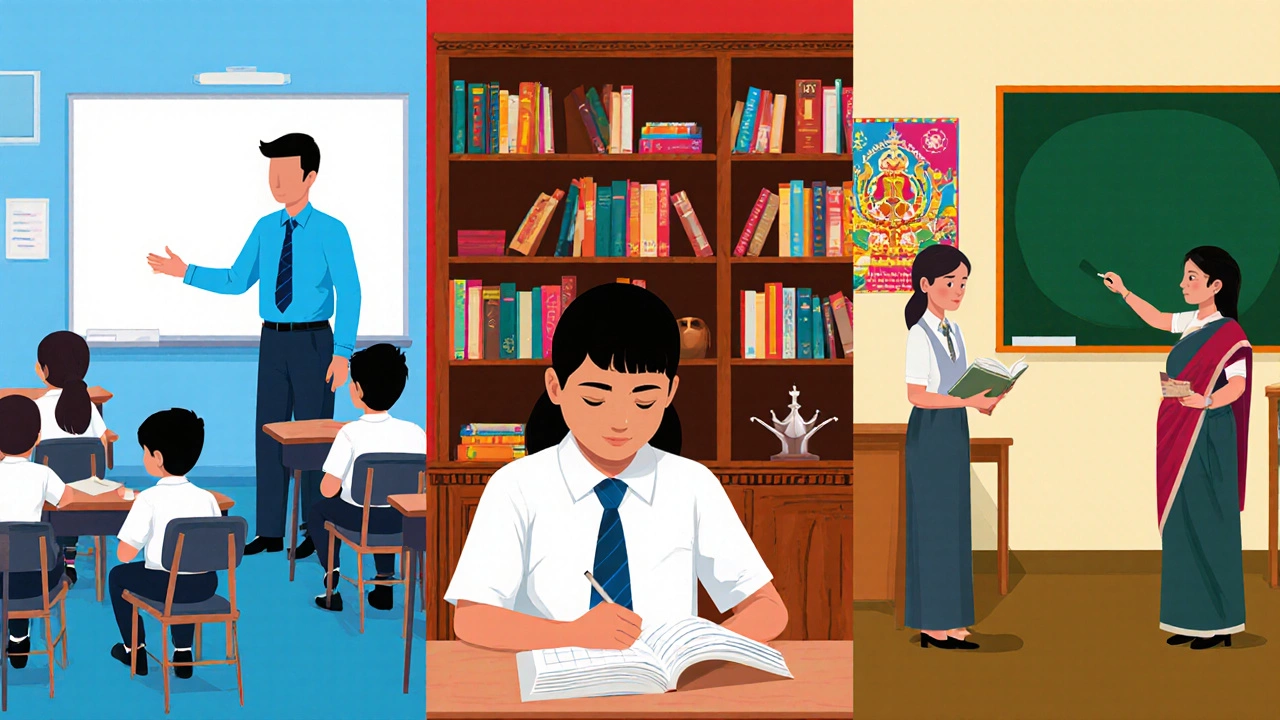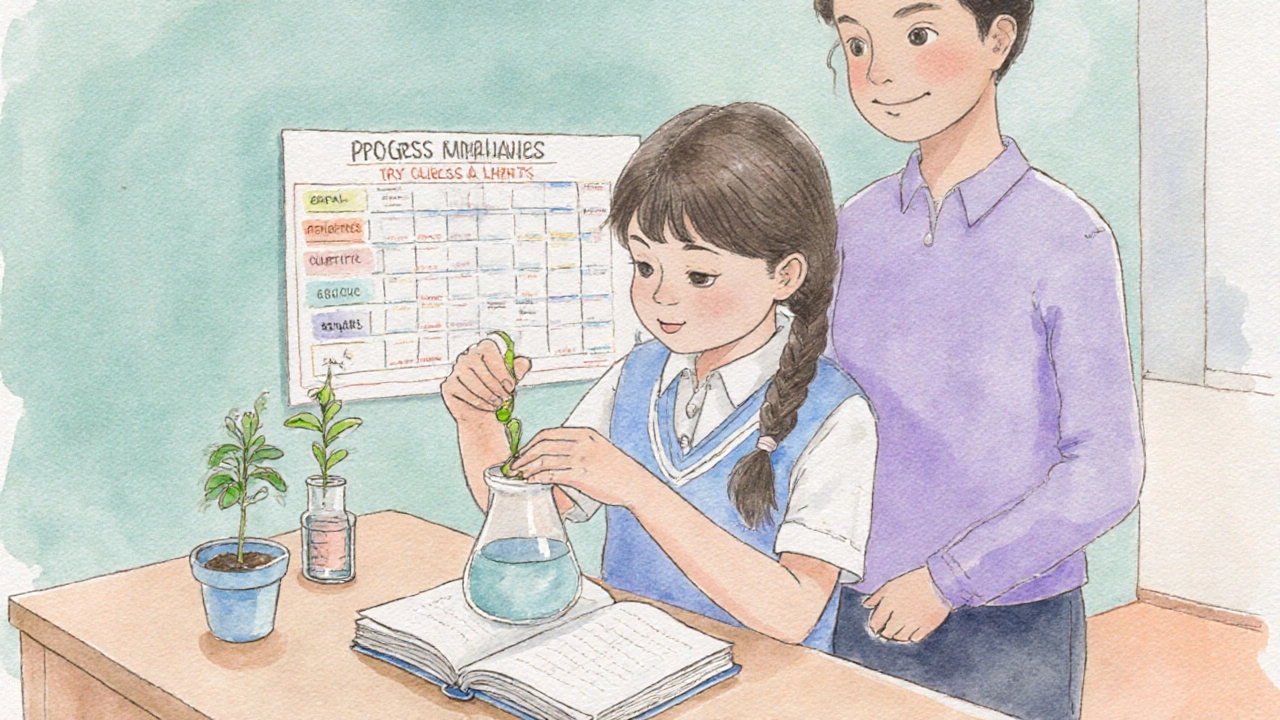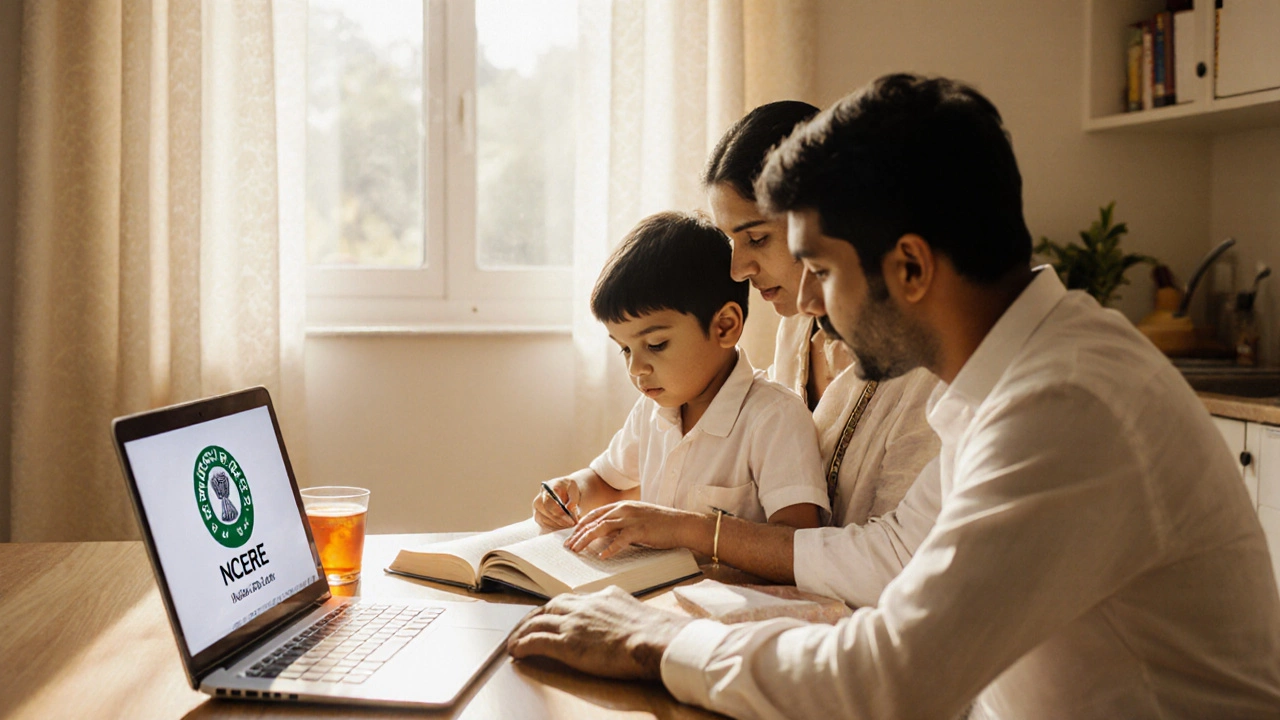When parents ask "CBSE syllabus is a national curriculum framework designed by the Central Board of Secondary Education for schools across India, the answer isn’t a one‑size‑fits‑all. Different schools interpret the framework in slightly different ways, and the right fit depends on your child’s learning style, future goals, and the resources available at home.
Understanding the CBSE Syllabus
The CBSE syllabus rests on a few core pillars: a focus on conceptual clarity, a uniform assessment pattern, and alignment with the NCERT textbooksofficial textbooks prescribed by the National Council of Educational Research and Training. These books form the backbone of classroom instruction from class 1 to class 12. The board also emphasizes the Continuous and Comprehensive Evaluation (CCE)a system that evaluates students on both scholastic and co‑scholastic areas throughout the year, replacing the old one‑time exam model.
Because the syllabus is centrally designed, it stays relatively consistent across schools, which helps students who move between cities or states. However, each school can add enrichment activities, project work, or optional modules, creating subtle variations that matter when you’re choosing the best fit.
Key Factors to Consider When Choosing a Syllabus
- Depth vs. Breadth: Some schools follow the CBSE core strictly, covering every topic in depth. Others trim the content to focus on core concepts, leaving more time for projects and life skills.
- Assessment Style: Look at the balance between internal assessments, periodic tests, and the final board exams. Schools that lean heavily on the CBSE exam patternstandardized 80‑question papers for each subject in Class 10 and 12 can be better for students aiming for competitive exams.
- Subject Electives: From Class 11 onwards, students can choose streams (Science, Commerce, Humanities). Some schools offer additional electives like Psychology, Computer Science, or Entrepreneurship, which can give an edge in college applications.
- Pedagogical Approach: Check whether the school adopts activity‑based learning, project‑oriented tasks, or pure lecture methods. The former aligns well with CBSE’s emphasis on conceptual understanding.
- Teacher Expertise: Experienced teachers who are familiar with the CBSE framework can interpret the syllabus more effectively, turning complex topics into digestible lessons.
- Parental Involvement: CBSE encourages home‑school collaboration. Schools that provide regular progress reports and suggest home study plans make it easier for parents to support learning.
Comparing CBSE with Other Major Boards
Many parents wonder how CBSE stacks up against the ICSE or the State board curricula. Below is a quick side‑by‑side look.
| Aspect | CBSE | ICSE | State Board |
|---|---|---|---|
| Governing Body | Central Board of Secondary Education | Council for the Indian School Certificate | State Education Departments |
| Core Textbooks | NCERT | ICSE‑approved private publishers | State‑specific textbooks |
| Assessment Focus | Continuous and Comprehensive Evaluation + Board Exams | Annual Board Exams with a strong emphasis on language skills | Varies; often heavy on rote memorisation |
| Curriculum Breadth | Balanced - moderate depth, wide coverage | High depth, especially in English and Science | Typically narrower, localized content |
| College Entrance Relevance | Highly aligned with national entrance exams (JEE, NEET) | Good for liberal arts and engineering, but less direct alignment | Depends on state policies; may require extra coaching for national exams |
If your child aims for engineering or medical entrance tests, CBSE’s alignment with those exams often makes it the safer bet. However, if your child thrives in a language‑rich environment and prefers deep literary analysis, the ICSE syllabus could be more engaging.

How to Tailor the CBSE Syllabus for Your Child’s Strengths
Even within a single school, you can customize the learning experience. Here are practical steps:
- Identify Core Weaknesses: Use the school's periodic test reports to pinpoint subjects where the child struggles.
- Leverage Supplementary Materials: Websites like Khan Academy or the National Digital Library of India offer videos and practice questions that match CBSE standards.
- Integrate Project‑Based Learning: For science subjects, encourage simple experiments at home that echo the practical components of the CBSE syllabus.
- Use Past Board Papers: Solving previous years' CBSE exam papers builds familiarity with the CBSE exam pattern and improves time management.
- Schedule Regular Review Sessions: Short, frequent revisions align with the CCE’s emphasis on continuous assessment.
Common Pitfalls and How to Avoid Them
Even well‑intentioned parents can trip up when navigating the syllabus.
- Over‑loading with Coaching Centers: Too many extra classes can lead to burnout. Stick to one coach for a subject that truly needs reinforcement.
- Ignoring Co‑Scholastic Areas: CBSE’s CCE scores points for life skills, art, and physical education. Neglecting these can hurt the overall score.
- Relying Solely on Textbooks: While NCERT books cover the core, supplemental reading (e.g., reference books for Mathematics) can deepen understanding.
- Last‑Minute Cramming: The board’s emphasis on conceptual clarity means that cramming rarely works. Start revisions early.

Checklist for Selecting the Right Syllabus
- ✅ Does the school follow the latest CBSE syllabus updates (2025 edition)?
- ✅ Are teachers trained in Continuous and Comprehensive Evaluation?
- ✅ Is there a clear plan for internal assessments and project work?
- ✅ Does the school offer optional electives that match your child’s interests?
- ✅ Are supplementary resources (online platforms, libraries) readily available?
- ✅ Is parental involvement encouraged through regular progress reports?
Cross‑checking these points will give you confidence that the chosen CBSE syllabus version will support your child’s academic journey.
Frequently Asked Questions
What makes the CBSE syllabus different from other boards?
CBSE focuses on a uniform, concept‑driven curriculum backed by NCERT textbooks and a continuous assessment system (CCE). This makes it especially suitable for students targeting national entrance exams.
Is the CBSE syllabus updated regularly?
Yes. The board revises the syllabus roughly every three years. The latest update, released in 2025, introduced new topics in Computer Science and Environmental Studies.
Can I supplement the CBSE syllabus with other resources?
Absolutely. Platforms like Khan Academy, BYJU'S, and the National Digital Library align their content with CBSE standards, offering videos, practice tests, and interactive quizzes.
How important are co‑scholastic activities in CBSE?
Co‑scholastic areas (art, sports, life skills) contribute to the CCE score and develop well‑rounded personalities. Ignoring them can lower the overall evaluation.
What’s the best way to prepare for CBSE board exams?
Start with NCERT textbooks, solve past year papers, and use mock tests that mimic the CBSE exam pattern. Combine this with periodic revisions and focus on conceptual clarity.
Choosing the right syllabus is less about finding a perfect system and more about matching a framework to your child’s unique needs. By understanding CBSE’s structure, weighing the key factors, and using the checklist above, you’ll feel confident that you’ve made an informed decision.
